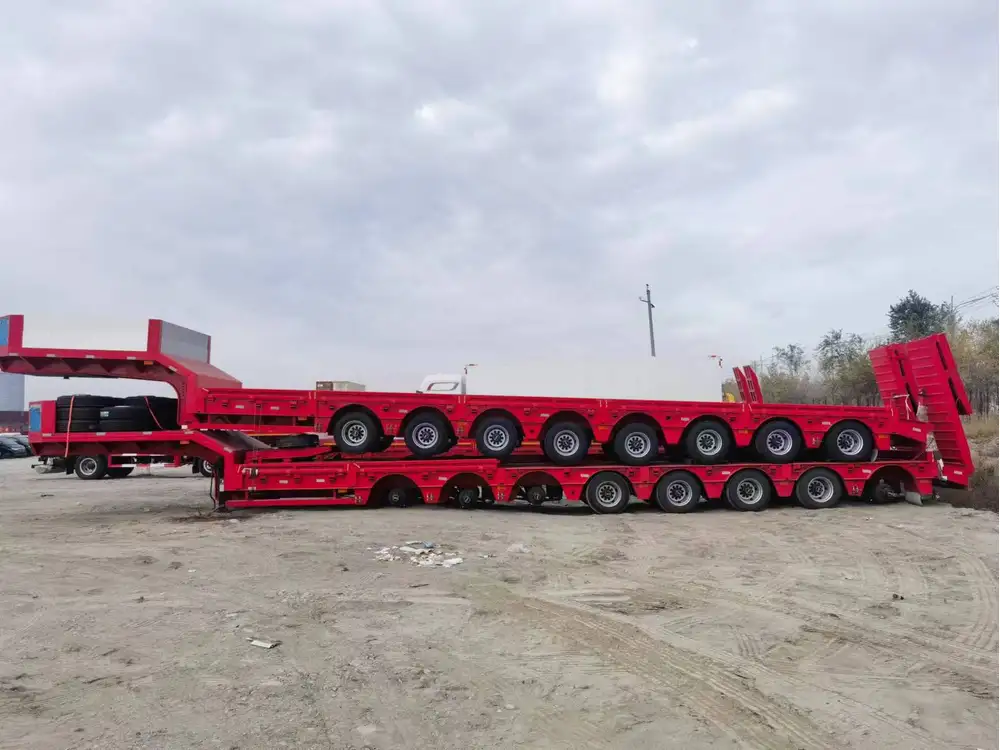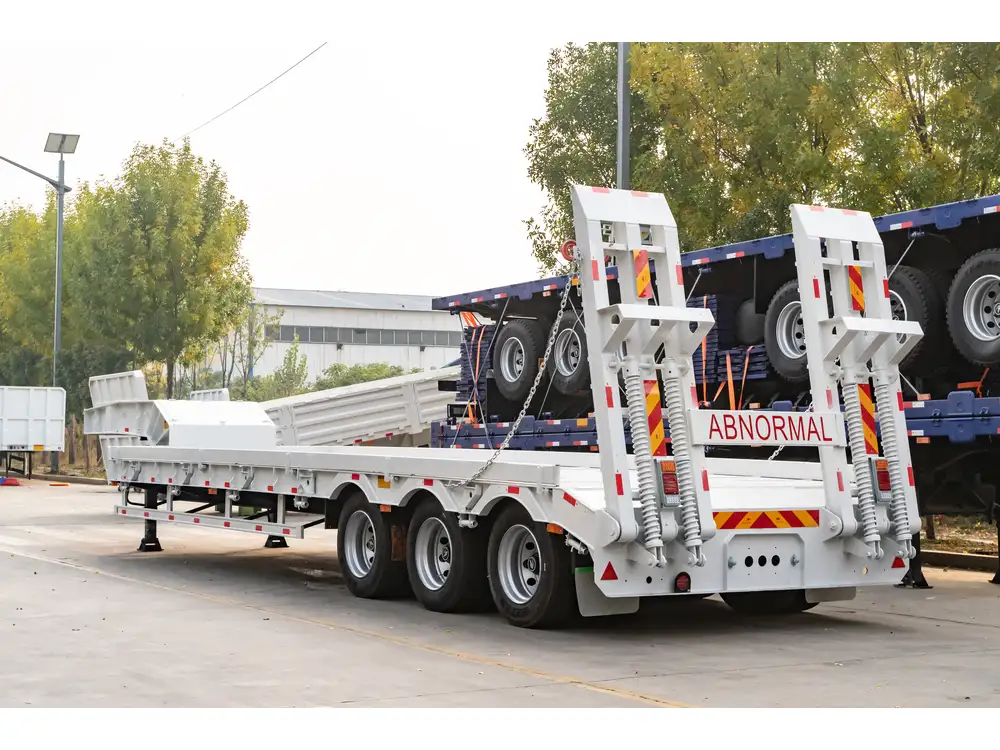When it comes to logistics, transportation, and the movement of goods, flatbed trailers serve as essential equipment. These invaluable transport structures possess unique capabilities that make them irreplaceable in various industries. In this comprehensive guide, we delve into the intricacies of flatbed trailers, particularly focusing on the most common type—the standard flatbed trailer. By providing a thorough examination of its features, applications, and advantages, we aim to offer you a resource that informs your decisions and enhances your knowledge.
What is a Flatbed Trailer?
Flatbed trailers are characterized by their open, levelbed surfaces that do not have sides or a roof, allowing for easy loading and unloading of various goods. They are commonly used in shipments that require heavy lifting and transportation of oversize or irregularly shaped items. Built with durable materials, flatbed trailers come in different configurations, sizes, and styles, with the standard flatbed being the most popular among them.
Key Features of Standard Flatbed Trailers

1. Structure and Design
- Open Design: The absence of sides allows for versatile loading from either the rear or sides.
- Platform Heights: Common heights range from 48 to 54 inches, which facilitate loading dock compatibility.
- Material: Typically constructed from high-strength steel or aluminum, ensuring durability while maintaining a manageable weight.
2. Weight Capacity
- Load Rating: Most standard flatbed trailers can accommodate loads ranging from 48,000 to 50,000 pounds.
- Axle Configuration: Various axle setups, including single, tandem, and triple axles, distribute weight effectively and enhance stability.
3. Safety Features
- Tie-down Points: Equipped with multiple tie-down points ensuring cargo security during transit.
- Ramps and Accessories: Options for foldable ramps, side kits, and tarps to protect and aid in securing various cargo types.

Applications of Standard Flatbed Trailers
Standard flatbed trailers are remarkably versatile and serve numerous industries. Here are some common applications:
- Construction: Transporting heavy machinery, steel beams, and construction materials.
- Agriculture: Moving agricultural equipment, produce, and livestock.
- Manufacturing: Shipping factory equipment, large fabricated products, and raw materials.
- Retail: Delivering oversized retail displays and seasonal merchandise.
- Logistics: Facilitating the transportation of containers, pallets, and bundled goods.
Advantages of Standard Flatbed Trailers
- Versatility: Their open design accommodates various cargo types, making them suitable for numerous industries.
- Efficiency: Quick loading and unloading capabilities reduce turnaround times, enhancing operational efficiency.
- Cost-Effectiveness: Standard flatbeds often have lower purchase and operational costs compared to enclosed trailers, making them an economical choice.
- Streamlined Loading: Capable of using forklifts and other machinery for rapid loading, standard flatbeds expedite processes.
Differentiating Types of Flatbed Trailers
Understanding the various types of flatbed trailers can inform your decision when selecting the best option for your needs. Here’s a brief comparison of them:
| Type | Description | Common Use |
|---|---|---|
| Standard Flatbed | Open deck trailer with no sides or roof; versatile. | Construction, manufacturing, agricultural transport. |
| Step Deck Flatbed | Lowered deck height allows for taller cargo. | Moving oversized loads that cannot be transported typically. |
| Double Drop Deck | Features two drops in height, suitable for oversized loads. | Transportation of extremely tall equipment. |
| Lowboy Flatbed | Designed for transporting heavy, tall items; lower to the ground. | Heavy machinery, construction equipment transport. |
| RGN (Removable Gooseneck) | Enables carrying tall vehicles by removing the front portion. | Moving heavy machinery and vehicles. |

Choosing the Right Flatbed Trailer
When considering a flatbed trailer for your operations, several factors must be evaluated to ensure you select the most appropriate model:
- Load Type: Identify the type of loads you frequently transport and their dimensions.
- Weight Capacity: Ensure the trailer’s weight rating aligns with your maximum load requirements.
- Configuration: Choose between single, tandem, or triple axles based on load distribution needs and terrain conditions.
- Customization Needs: Assess whether you require additional features like sidekits, tarps, or customizable tie-down solutions.
Tips for Maintaining Flatbed Trailers
Proper maintenance of flatbed trailers not only extends their lifespan but also enhances performance and safety. Here are essential maintenance tips:
- Regular Inspections: Conduct thorough inspections of the trailer’s structure, including the deck, frame, and undercarriage.
- Check Tie-Downs: Regularly inspect tie-down points and securement methods for wear and tear.
- Tire Maintenance: Frequently check tire pressure and tread wear, and rotate or replace tires as needed.
- Keep it Clean: Regular cleaning prevents rust, corrosion, and impact damage from contaminants.
- Lubrication: Ensure all moving parts are adequately lubricated to reduce wear and improve performance.
Conclusion: Emphasizing the Vital Role of Flatbed Trailers
Flatbed trailers, especially the standard type, play a crucial role in today’s logistics and transportation landscape. Their adaptability, structure, and efficiency make them the preferred choice for various industries and applications. By understanding their features, advantages, and maintenance essentials, you can maximize your operational capabilities and ensure the safe transport of goods.

Frequently Asked Questions (FAQs)
What is the maximum weight a standard flatbed trailer can carry?
A standard flatbed trailer can typically carry loads between 48,000 to 50,000 pounds, depending on its specific configuration and axle count.
Are flatbed trailers suitable for transporting heavy machinery?
Yes, flatbed trailers are designed for transporting a wide variety of items, including heavy machinery and oversized loads, making them ideal for construction and industrial use.

What additional features can enhance the functionality of a flatbed trailer?
Features such as removable side kits, tarps for weather protection, foldable ramps for easy loading, and extra tie-down points can enhance the versatility and utility of flatbed trailers.
How often should flatbed trailers be inspected?
It is advisable to inspect flatbed trailers at least once a month, along with thorough checks before long trips, to ensure they are in safe working condition.
Flatbed trailers are unparalleled in their ability to cater to diverse operational demands, and understanding their nuances can lead to strategic advantages in transporting goods effectively. Ensure to engage with trusted manufacturers to discuss your specific needs and discover tailored solutions that align with your operational requirements.



